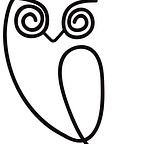If you’re a parent trying to teach your child to read right now, you may be wondering — Why these words? What is the history of sight words? Why do we need them? What do they mean? Or maybe your child has asked you these questions after having grown tired of countlessly repeating the, of, at , word, because, for, etc.
According to SightWords.com, sight words are words that should be memorized to help a child read and write. Learning sight words means that your child will be able to recognize them at a glance, and won’t need to break the words down letter by letter, thus making reading easier and faster. And as you can imagine, probably more fun too!
There are two types of sight words:
Frequently used words, such as can, it, and will; and non-phonic words such as come, buy, or talk.
Frequently used words are common, learning these words helps aid in making reading smoother and easier after mastering them your child can focus on new words.
Learning Non-Phonic words which have unnatural spelling and pronunciation while help your child recognize similar words such as guy, walk, or some.
Now you may be wondering “Where did my child’s teacher compile this list?”
It turns out that there are three lists your child’s teacher had to pull from:
There is Dolch’s Sight Words List: this is the most common list created in the 1930s and 40s by an educator named Dr. Edward William Dolch; this list contains 80% of words you’d find in a children’s book and 50% of words found in writing for adults. This list ranges from Pre-K through 3rd grade and contains a separate list of nouns, there are a total of 315 words on the list.
The Fry Sight Words List is the second option; it’s a more modern list that aims to capture 1,000 of the most common words. This list covers from grade 3, where Edwards list leaves off, to grade 9. Supposedly if your child learned all 1,000 words, they would be equipped to read about 90% of the words found in a book, newspaper, or on a website.
A third option can be a combination of these lists or any existing lists for your child in the classroom. Most teachers customize their list to fit in words from their own classroom lessons.
We at Educasic love sight words! Download Sights to help your child master their lists today!
Do you teach sight words in your classroom? Check out www.getSights.com.
